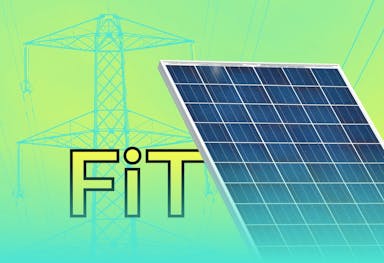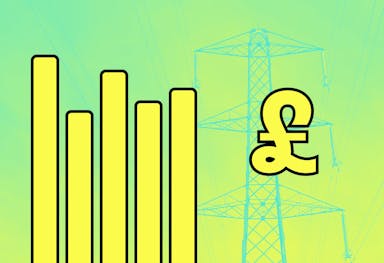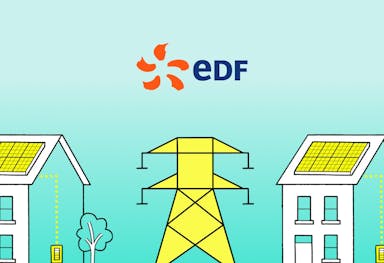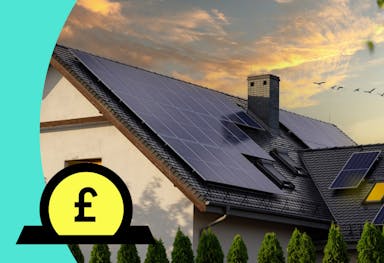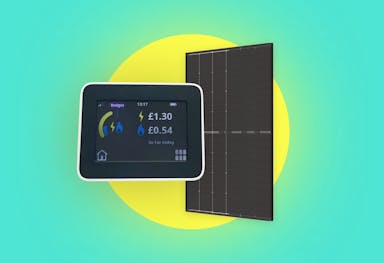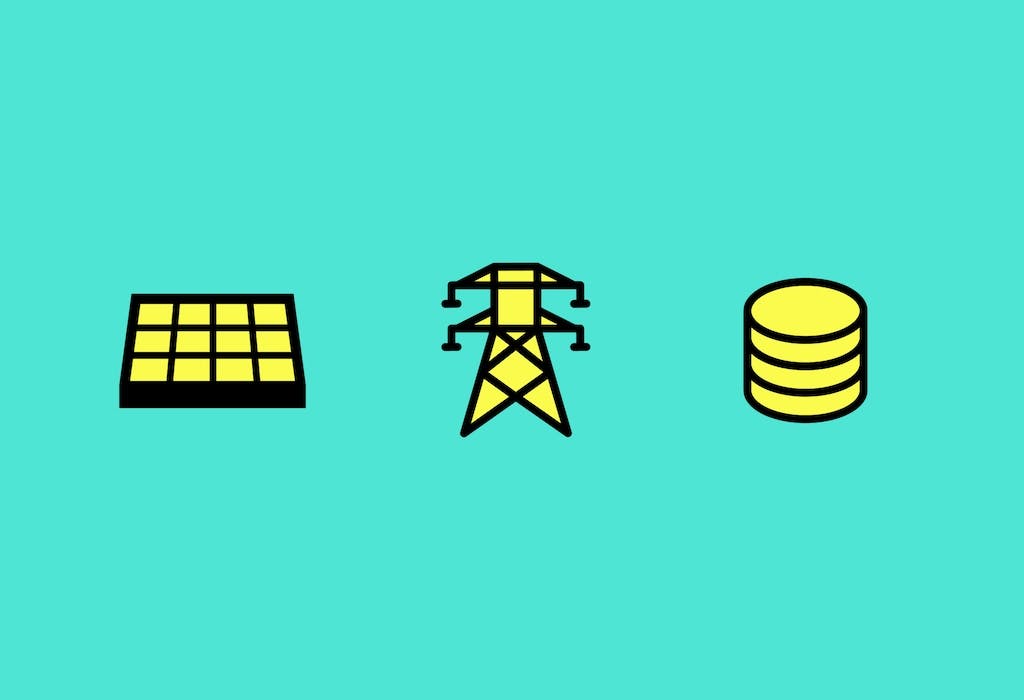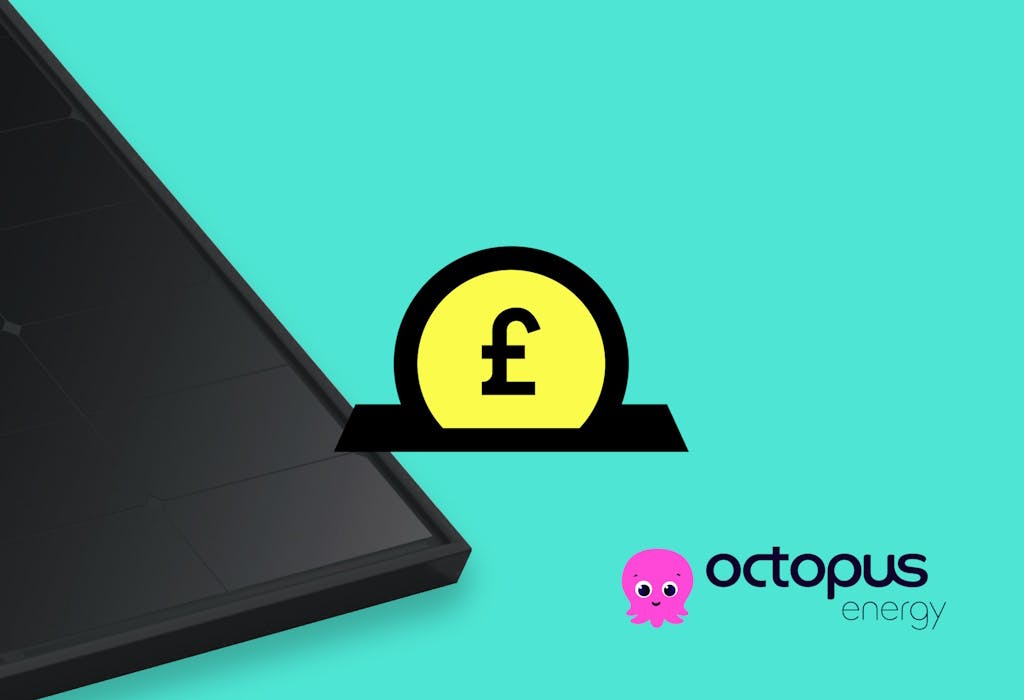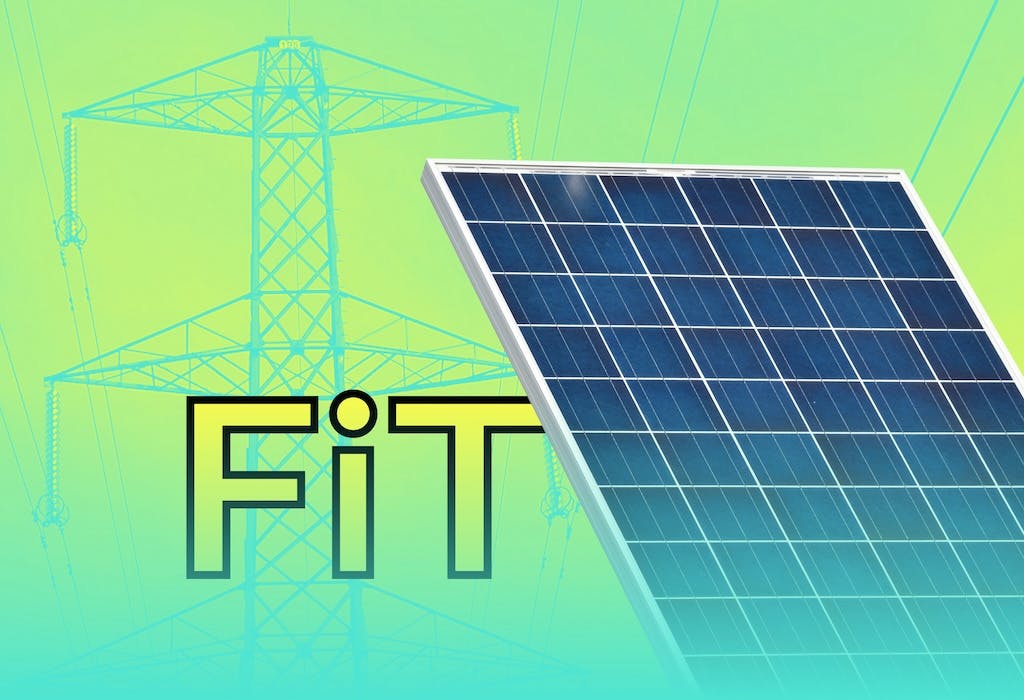- Solar advice hub
- Exporting-to-the-grid
- The Smart Export Guarantee: explained
The Smart Export Guarantee: explained
Here's what the Smart Export Guarantee is, how it works, a deep dive into the data, and whether it’s worth it.


Why you can trust our content
We know that the solar industry is full of misinformation, but we only use reliable sources, including:
- Our experienced solar experts, installers and system designers
- Our own database of solar & battery system designs
- Authoritative bodies like MCS and the UK government




Calculate savings
What kind of home do you live in?
Calculate savings
What kind of home do you live in?
The Smart Export Guarantee: at a glance
Even with a large battery, most solar homes will produce more electricity than they need at various times during the year – particularly under the sunny skies of summer.
The Smart Export Guarantee (SEG) ensures energy suppliers have to pay you for sending this excess electricity to the grid, and is designed to encourage uptake of renewable generation systems.
In this guide, we'll explain how the SEG works, how you can qualify, and how much you could earn.
If you’re thinking of making the switch to solar, you can find out how much a solar & battery system could save you by answering a few quick questions below.
Find out how much you can save
What kind of home do you live in?
What is the Smart Export Guarantee?
The SEG is a UK government scheme that compels energy suppliers with at least 150,000 domestic electricity customers to pay households for all the electricity they export to the grid.
It began in January 2020 as a direct replacement for the Feed-in Tariff (FiT), which closed to new applicants in March 2019.
Unlike the FiT, it doesn’t include a generation rate, but you don’t have to give up your FiT generation payments to sign up to an SEG tariff.
The eligible technologies under the SEG are the same as they were for the FiT: solar, wind, hydroelectric, anaerobic digestion, and micro combined heat and power.
Solar is the stand-out star, though. 99.98% of SEG registrations between April 2023 and March 2024 were for solar installations, according to Ofgem’s Annual Report – and the number of sign-ups is skyrocketing.
283,666 solar homes joined an SEG tariff in this period, which was three times more than the 92,946 that signed up in the previous year.
Two government departments run the SEG; the Department for Energy Security and Net Zero (DESNZ) has overall responsibility, and Ofgem manages certain parts of it.
How does the SEG work?
Under the SEG, energy providers with over 150,000 domestic electricity customers must offer a tariff that pays small renewable generators, including households and small businesses, for any electricity they export to the grid.
These suppliers, known as SEG licensees, are free to set any rate above zero for these tariffs, which can be fixed or variable.
Your chosen SEG tariff provider doesn't have to be the same as your energy supplier, but companies typically offer their best export tariffs to customers.
SEG tariffs are of course subject to market conditions, meaning suppliers can – and do – change their rates at regular intervals, but the desire to attract new customers is currently leading companies to offer increasingly high rates.
In the 2023-24 period, households could choose from 42 tariffs created by 11 mandatory licensees – and two voluntary licensees, Pozitive Energy and Rebel Energy – which reached new heights of 27p per kWh.
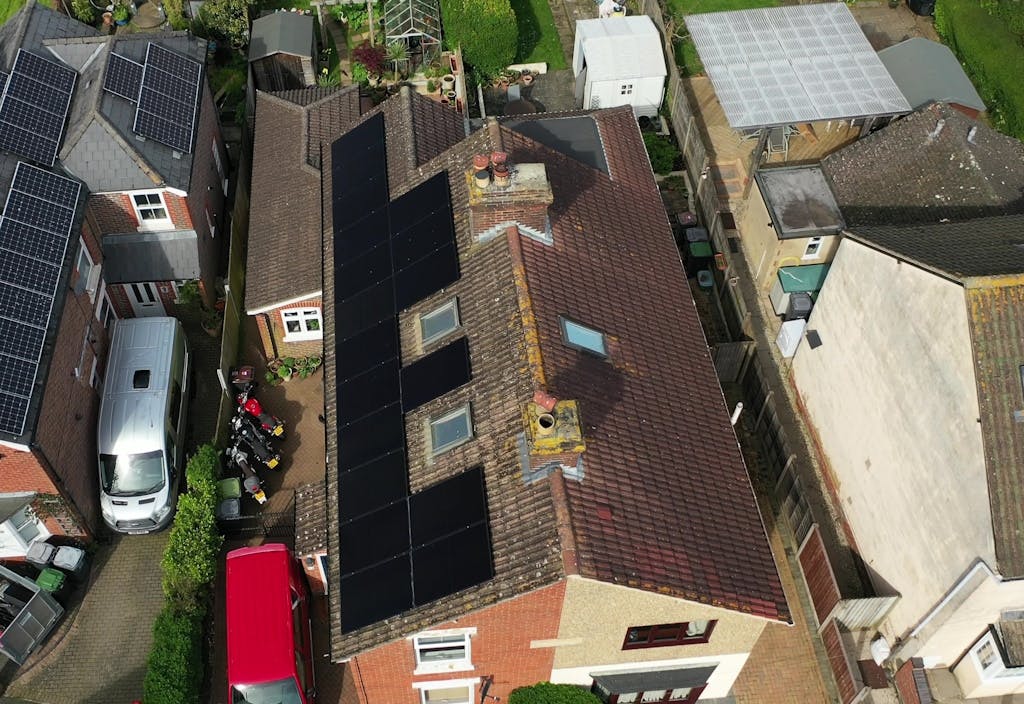
Mandatory and voluntary licensees
All energy companies with at least 150,000 domestic electricity customers on 31 December will be mandatory SEG licensees during the next financial year, which starts on 1 April.
Their main obligation is to provide at least one SEG-compliant tariff, though in reality, they usually offer a minimum of two: one for customers, and one for non-customers.
Mandatory SEG licensees have a few other rules to follow too. They must:
- Offer at least one SEG tariff to eligible installations
- Assess the eligibility of installations
- Make SEG payments based on export meter readings
- Handle any complaints from SEG generators
- Provide data to Ofgem on tariff offerings, uptake, and payments
Energy suppliers with fewer than 150,000 domestic electricity customers on 31 December have the option of becoming a voluntary licensee at the beginning of the following financial year.
If they do so, they have to follow all the same rules as mandatory licensees – except they can opt out when April rolls around again.
If they don’t volunteer to be a licensee, an energy company can offer export tariffs without being subject to SEG rules, though customers tend to look for export tariffs with the SEG label.
Bundled and unbundled tariffs
SEG licensees can either provide a bundled tariff – meaning customers must buy electricity and/or specific products from them to qualify – or an unbundled tariff, which has none of these requirements.
However, suppliers who offer a bundled tariff also have to provide at least one unbundled tariff that’s open to all households.
Of the 42 tariffs offered over the 2023-24 period, the split was exactly 50-50: there were 21 bundled tariffs, and 21 unbundled tariffs.
This was a significant shift from the previous two years, when 64% of tariffs were unbundled, and shows that suppliers are realising how bundled SEG tariffs can help bring in customers.
Bundled tariffs were priced more appealingly, with an average rate of 13.8p per kWh that was 218% higher than the unbundled average of 4.3p per kWh.
The highest unbundled rate was ScottishPower’s 12p per kWh SmartGen tariff, which is only just below the average bundled rate, but customers still understandably flooded to take advantage of bundled rates.
224,250 sign-ups were to bundled tariffs, while unbundled rates captured just 59,416 – meaning bundled rates attracted a massive 79.1% of all registrations.
Six of the top 10 most popular SEG tariffs were bundled rates – and four of them simply required households to import electricity from the same supplier.
Considering that changing electricity providers is easy, often free, and usually makes a limited difference to your electricity bill, it makes sense that many homes switched for extra export earnings.
The growth of SEG tariffs, 2020-2024
SEG tariffs have grown in number and attractiveness since the initiative launched in 2020.
You can see the increasing popularity of bundled tariffs in the chart below, as providers come to understand how they can use export rates to bring in new customers.
There were 42 tariffs offered by SEG licensees in 2023-24, representing a 7.7% increase on the previous year, and amounting to a 100% rise on the first year of the SEG, in 2020-21.
The fact that the number of SEG tariffs has grown in every year of the scheme’s existence shows how suppliers have become more ambitious as time has gone on.
Many providers now offer three or even four tariffs to target different types of customers, with the highest rates reserved for households that will commit to them in one way or another.
How much can you earn with the SEG?
You can earn hundreds of pounds per year by signing up to an SEG tariff.
The exact amount you’ll make will mainly depend on which tariff you pick, how much electricity your solar panel system produces, and how much of it you export to the grid.
You can earn anywhere from 1p to 40p per kWh. The average rate for 2023-24 was 8.9p per kWh, but your export rate will depend almost entirely on whether you sign up for a bundled or unbundled tariff.
The average unbundled amount paid in this time period was 4.36p per kWh, while the bundled average was 13.45p per kWh.
The gap between the two has gradually widened, going from 1.22p per kWh in 2020-21 to 9.09p per kWh in 2023-24, and there’s every reason to think it’ll widen further.
As it does, the amount you can earn with the SEG will likely rise as companies attempt to outdo each other to attract new customers.
That’s certainly the current trend. Suppliers paid out £30.7 million through SEG tariffs in 2023-24, which was a 327% increase on the £7.2 million handed out in 2022-23.
And the average rate has skyrocketed by 102% in four years, from 4.34p per kWh in 2020-21 to 8.9p per kWh in 2023-24.
You can receive SEG income regardless of whether you've paid the upfront cost of solar panels or if you've opted for a solar subscription.
Average SEG tariff rates, 2020-2024
SEG tariff rates are on the rise, and it’s almost entirely due to suppliers offering generous bundled tariffs in order to attract new customers.
The average unbundled rate has barely shifted since 2020, but bundled rates have shot up by 145% overall.
These are just averages, and better rates are available. You can earn up to 12p per kWh without taking on any obligations, and well beyond 25p per kWh on certain bundled tariffs.
To find out what the top tariffs are at the moment, read our guide to the best SEG rates.
If you’re wondering how much a solar & battery system could save you, answer a few quick questions below and we’ll provide you with an estimate.
Find out how much you can save
What kind of home do you live in?
The pros and cons of the SEG
The SEG has given homes another valuable reason to generate their own renewable electricity.
Before the scheme, solar sales had stagnated due to the upfront cost and dwindling Feed-in Tariff (FiT) returns. The significant uptick in homes going solar since January 2020 and the scheme’s rapidly growing popularity are a testament to its success.
The major drawback of the SEG is its tariffs don’t come with generation rates, which sets it apart from the Feed-in Tariff – but it’s a far sight better than exporting electricity for nothing.
| Pros | Cons |
|---|---|
| Incentivises renewable energy generation | It doesn’t pay a generation rate, unlike the FiT |
| Encourages long-term investment in renewable energy infrastructure | Payments can vary depending on the energy supplier and market forces |
| Covers a wide range of renewable sources, including solar, wind, hydro, and more | Dependent on production, i.e. earnings are directly linked to the amount of excess electricity produced |
| Allows you to choose your own SEG tariff provider, which doesn't have to be your energy supplier | |
| Encourages energy independence | |
| Provides households with an additional source of income | |
| Limits the need for grid expansion by shifting consumption away from peak times and providing more domestic storage |
The most popular SEG tariff providers
Octopus is the most popular SEG tariff provider by far, followed at some distance by suppliers including E.ON, British Gas, and ScottishPower.
Bulb was acquired by Octopus a couple of months into the 2023-24 period, so all of its customers – though distinct in Ofgem’s statistics – are also registered to Octopus.
197,109 households signed up to one of Octopus’s SEG tariffs in 2023-24, making up 69.5% of the year’s total registrations.
British Gas was miles behind on 21,350 sign-ups, which was 7.5% of the total number.
Number of SEG registrations by provider, 2024

The UK's first solar subscription
- No upfront cost
- Fixed monthly fee
- 20-year Sunsave Guarantee
What are the requirements for an SEG tariff?
To be eligible for an SEG tariff, your system must meet the following requirements:
- It must be one of the following renewable sources: solar, wind, hydroelectricity, micro combined heat and power (micro-CHP), or anaerobic digestion
- The system’s maximum capacity must not exceed five megawatts (MW), or 50 kilowatts (kW) for micro-CHP
- You must have a smart meter
- The system must have a valid Flexi-Orb or Microgeneration Certification Scheme (MCS) certificate - meaning you can't sign up with a DIY solar installation
Once these conditions are met, you can apply for any SEG licensee’s export tariff, and earn money for every kWh of electricity you send to the grid.
Each supplier sets its own rates, so they naturally vary. Providers usually pay households on a monthly or quarterly basis, though some opt for a twice-yearly schedule – or, in E.ON’s case, annually unless you specifically ask that it be paid quarterly.
Your earnings will be based on the tariff and how much electricity you export, as recorded by your smart meter. To learn more, check out our guide to how smart meters work with solar panels.
What if I don’t have a smart meter?
You’ll need a smart meter if you want to sign up for an SEG tariff.
Owning one is compulsory, as it ensures your SEG tariff’s supplier receives accurate export readings every 30 minutes, and can therefore pay you the correct amount.
All energy suppliers are legally obliged to install smart meters for their customers, for free – so just request one, and you should have one fitted in the near future. It’s as easy as that.
What’s the sign-up process?
First, fill in an application form for your chosen SEG tariff. You can find the document on the supplier’s website.
Some providers insist you post completed forms, though many allow you to submit them online.
You’ll likely need your system’s MCS or Flexi-Orb certificate, a photo of your smart meter, proof of your address, proof you own your system, a schematic of your system, and evidence that your Distribution Network Operator (DNO) has approved your G98 or G98 application.
If you don’t receive your electricity from this provider, you’ll also need to enter your bank details.
While your SEG tariff’s provider processes your application, your provider will ask the DNO – which is the organisation that runs the hardware supplying electricity to your region – for an export MPAN (Meter Point Administration Number), which identifies your meter.
After a quick test reading, you’ll start being paid for all the electricity you export to the grid.
How long does it take to sign up?
Signing up for an SEG tariff can take anywhere from five to 12 weeks, depending on which supplier you choose, and whether your meter has already been assigned an export MPAN.
Ask your SEG licensee for a timeframe, and ask that your export payments are backdated to the date you submitted your application, rather than starting from the day the entire process is completed.
Can you switch between SEG tariffs?
You can switch between SEG tariffs, though how easy it is will depend on the terms set by your current tariff supplier.
Some companies, including OVO, impose an exit fee on households that leave a fixed SEG tariff prior to 49 days before the end of your contract. After that, it’s free, as stated in Ofgem’s switching windows rule.
Just like signing up for your first SEG tariff, it simply involves filling in an application with your new supplier, then following the rest of the registration process.
It should be a bit quicker this time, since your meter will already have an export MPAN, and you'll have all the relevant documentation.
Is the SEG any good?
The SEG is an effective replacement for the Feed-in Tariff, particularly as the years have gone by and the rates have climbed to record levels.
The uptick in SEG registrations and solar homes are clearly related to each other, since the number of installations has grown as the scheme's rates have gradually improved and made solar panels more profitable.
As a result, hundreds of thousands of homes are now paid properly for the energy they export to the grid, solar panel owners are significantly shielded from energy price rises, and the UK’s electricity supply is greener than ever.
SEG tariffs also now have the potential to earn you much more than the FiT can. As of November 2024, the FiT pays 5.07p or 7.14p per kWh of exported electricity, depending on when your system was installed – well below what you can make on an SEG tariff.
The FiT does also offer a generation tariff – but crucially, you don’t have to give up your FiT generation payment to sign up for an SEG export tariff.
With solar homes able to switch regularly to find the best SEG tariff – and with energy prices set to stay high until at least the late 2030s – there’s every reason to expect that SEG rates will also remain generous.
Find out how much you can save
What kind of home do you live in?
Smart Export Guarantee: FAQs
Related articles

Written byJosh Jackman
Josh has written about the rapid rise of home solar for the past six years. His data-driven work has been featured in United Nations and World Health Organisation documents, as well as publications including The Eco Experts, Financial Times, The Independent, The Telegraph, The Times, and The Sun. Josh has also been interviewed as a renewables expert on BBC One’s Rip-Off Britain, ITV1’s Tonight show, and BBC Radio 4 and 5.


